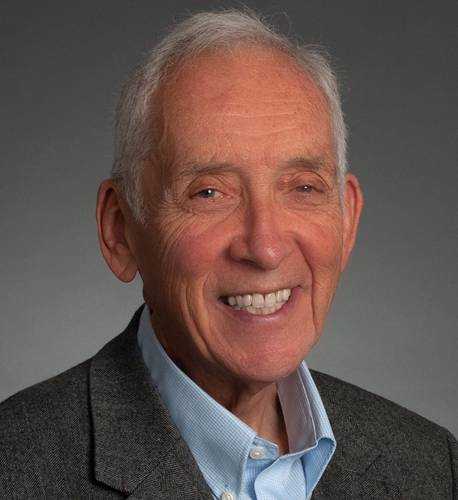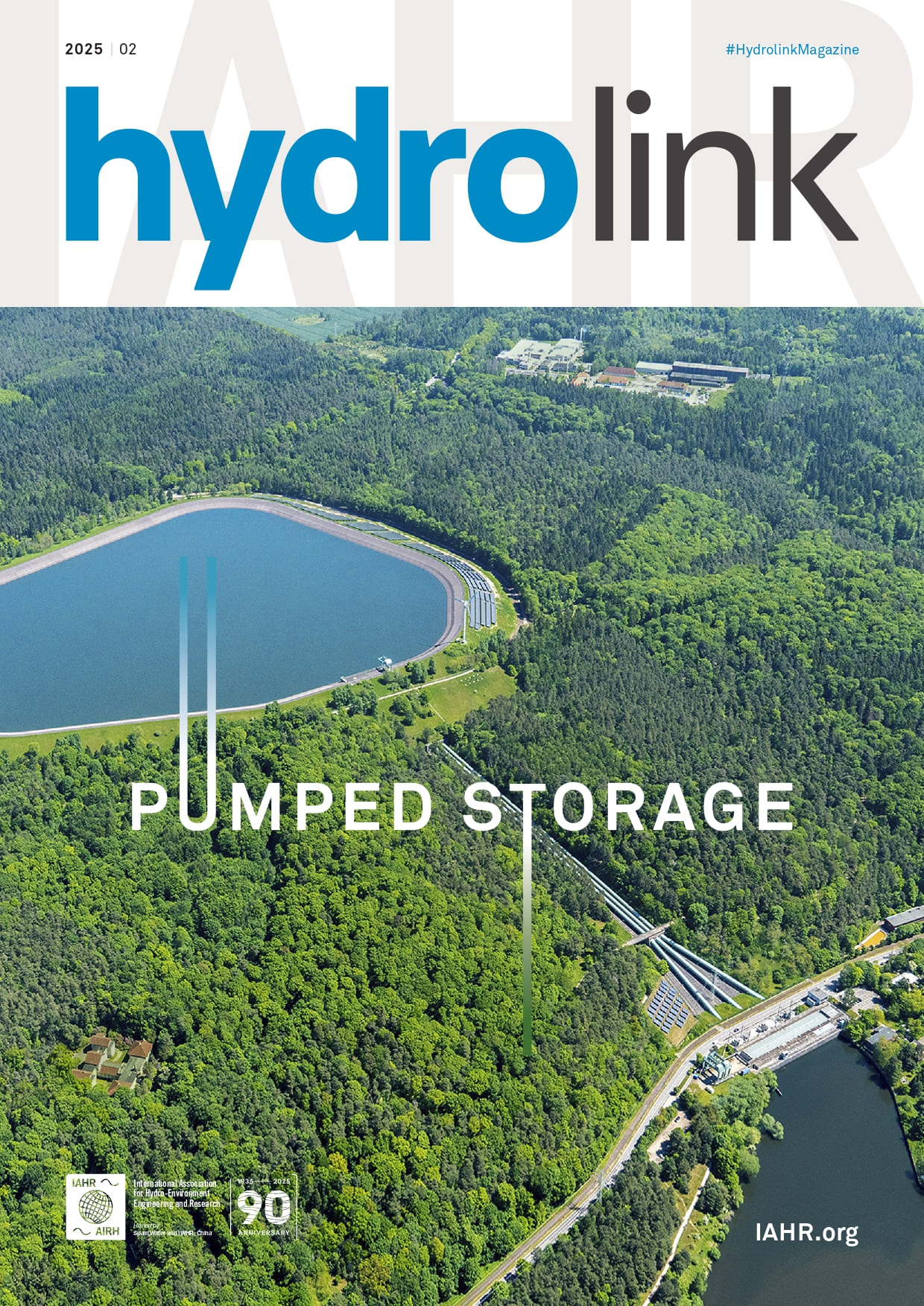Hydrolink Magazine
HOME > Hydrolink Magazine

Advisory Board Latest issue (Free access) Upcoming issues Previous issues (Free access) Advertise in Hydrolink
#HydrolinkMagazine
Hydrolink is the primary magazine of the IAHR community and one of the highest-rated member benefits. It brings you the latest developments in the field of hydro-environment engineering and research through articles on projects, research, and new methods and tools of interest to the community. It also provides a platform for reporting on IAHR Conferences and news from our members, and offers a forum for exchanging information and spreading the word on topics and projects relevant to the community.
The online version of Hydrolink is open to non-members since 2021 as part of the efforts of the association to disseminate and share knowledge. In addition to the online version, IAHR members will continue to receive their full colour printed copy at their desks periodically as a membership benefit.
ISSN: 1388-3445
Publication Frequency: 4 issues per year.
Latest issue ↑
Hydrolink 2, 2025 | Pumped Storage
Pumped storage hydropower has grown rapidly over the last fifty years, first to store energy produced by thermal and nuclear stations during off-peak hours when demand is low, and since the turn of the century to deal with the intermittency of wind and solar power generation. By 2023 the global installed capacity of pumped storage projects had reached 179 GW, 28.4% of which was in China, 15.3% in Japan and 12.4% in the United States. The International Hydropower Association (IHA) estimates that pumped storage accounts for over 94% of the world’s long duration energy storage capacity. Despite progress in the development of battery technology for large-scale energy storage and research in alternatives to lithium-ion batteries, such as sodium-ion batteries, flow batteries, and solid-state batteries, it is unlikely that any of these technologies will be cost-competitive with pump storage hydro in the near future.
Download and share! Subscribe free!
Contents
In depth > Pumped Storage
Types, functions, and development status of pumped storage hydropower stations, by Zhongxin Luo, Xiaolin Luo and Xin Sui.
Measures to promote Pumped Storage Hydropower projects in Spain, by Tomas Ángel Sancho Marco and Imanol García Sendón.
Pumped Storage Hydropower in arid climates: a crucial asset for energy transition, by Benoît Houdant and Thomas Pinchard.
Design challenges in the renaissance of pumped-storage hydropower to support the energy transition, by Anton Schleiss.
The critical role of power intake/outlet structures in pumped storage schemes: Design challenges and optimization, by Azin Amini and Giovanni De Cesare.
Pumped-Storage Technology: Fixed vs. Variable speed, by Michael Schmid.
Integrated Simulation and Optimization Framework for Enhancing the Regulation Capacity of Pumped Storage Units, by Kan Kan, Fei Zhang, Huixiang Chen and Xiaotong Yan.
About the Editor

Angelos Findikakis received his first degree in Civil Engineering in 1968 from the National Technical University of Athens, Greece. After working on water resources planning and development studies in Greece he came to Stanford for graduate studies in 1973. Since 1980 he has been working for Bechtel Corporation in San Francisco. Over the years he worked on a broad range of water studies in support of the permitting, design and construction of several industrial projects including civil infrastructure, power, mining, oil and gas, and waste storage facilities. As a Bechtel Fellow since 1998 he advises senior management on questions related to his expertise, participates in strategic planning, and helps disseminate new technical ideas and findings throughout the organization.
Upcoming issues ↑
Issue 3, 2025: Digital Twins
Issue 4, 2025: Adaptive Management for Climate Change
Previous issues ↑
The online version of Hydrolink is open to non-members as part of the efforts of the association to disseminate and share knowledge. In addition to the online version, IAHR members will continue to receive their full colour printed copy at their desks periodically as a membership benefit.
Full access to previous issues Join IAHR!
Advertise with us
Hydrolink currently reaches around 27,000 subscribers targeted as researchers, water engineers, academics, water practitioners, and industry representatives and provides you with the best platform to carry your message to the hydro-environment engineering community. Please check our advertisement rates and offers.
Information for authors
Most articles published in every issue focus on a specific theme developed by the Editor with the support of the Hydrolink Advisory Board and the IAHR Executive Committee. If you would like to propose a theme for a future issue, or contribute an article on one of the planned themes, please contact either the editorial assistant, Estibaliz Serrano, or the editor, Angelos N. Findikakis.
>> Instructions and guidelines for authors [PDF format]
Advisory board ↑
Editor
Angelos N. Findikakis, Bechtel Fellow, Bechtel Corp, USA
Technical Editors
Mehedi Hasan Bappy, Research Engineer, Intelligent Medicine Inc., USA
Mistaya Langridge, McCloy Consulting Ltd, Ireland
Editorial assistant
Estíbaliz Serrano, IAHR Secretariat Madrid Office, Spain, publications@iahr.org
Advisory board
Luis Balairón, Director of Hydraulics Laboratory, CEDEX - Ministry Public Works, Spain
Jean Paul Chabard, Professor at Ecole des Ponts Paris Tech, Project Manager, EDF Research & Development, France
Jaap C.J. Kwadijk, Scientific director, Deltares, The Netherlands
Henrik Madsen, Head of Research and Development, DHI, Denmark
Rafaela Matos, Head of Hydraulics and Environment Department, Laboratório Nacional de Engenharia Civil (LNEC), Portugal
Sean Mulligan, VorTech Water Solutions and National University of Ireland Galway (NUIG), Ireland
Yasuo Nihei, Tokyo University of Science, Japan
Jing Peng, President, China Institute of Water Resources and Hydropower Research, China
Olivier Bertrand, Project Manager, Artelia Eau & Environnement, France
James Sutherland, Principal Scientist, HR Wallingford, UK
José N. De Piérola, Senior Advisor in Water Resources Management, Peru
Ex-officio
Peter Goodwin, Past President of IAHR, President of University of Maryland Center for Environmental Science, United States of America
